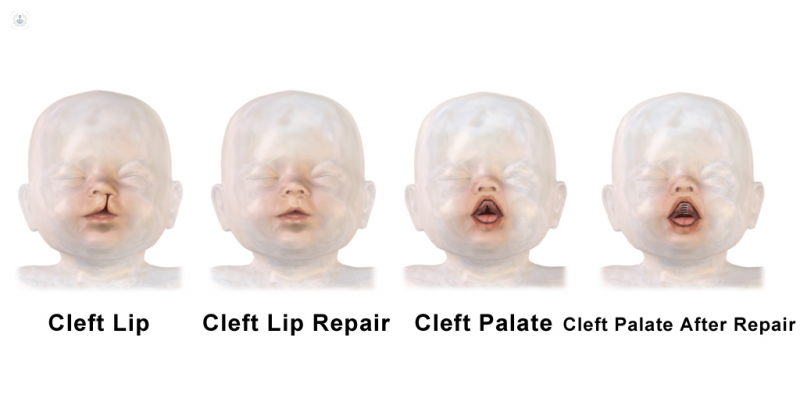


What is a cleft lip and palate?
A cleft lip and/or cleft palate is a congenital condition in which parts of a baby’s face didn’t fuse together properly in utero, and as a result the child is born with a split or gap in the upper lip (cleft lip) and/or the roof of their mouth (cleft palate).
It affects around one in 700 babies born in the UK, making it the most common facial birth defect in the country.
Symptoms of a cleft lip and palate
The main symptom of a cleft lip is the physical appearance of the baby’s face. It may affect just one side of the lip, or there may be two separate splits. The clefts can be small notches or may extend all the way up to the nose.
A cleft palate, on the other hand, is a hole in the roof of the mouth, and may be less obvious than a cleft lip. Cleft palates can sometimes be hidden by the lining of the roof of the mouth. Again, they can vary in size, from a small hole in the back of the mouth to a split that runs along the whole roof of the mouth to the lip.
Often, the baby will be born with both a cleft lip and cleft palate.
Cleft lips and cleft palates can cause a variety of problems until they are fixed with surgery:
- Feeding – the baby may struggle with breastfeeding or bottle-feeding normally as their mouth can’t form a seal.
- Dental problems – the child’s teeth may not develop correctly and may be at an above-average risk of tooth decay.
- Speech problems – if the cleft lip and palate aren’t fixed with surgery they can impair speech when the child is older.
- Hearing problem – some babies with a cleft lip or cleft palate are at a higher risk of ear infections and glue ear (a build-up of fluid in the ear), which can affect hearing.
Medical tests to diagnose cleft lip/palate
A cleft lip or palate may be diagnosed before birth if it shows up on an ultrasound scan. Most are spotted during the mid-pregnancy anomaly scan (usually done between the 18th and 21st week of pregnancy). However, sometimes the condition will not be obvious on the scan and may not be noticed until the baby is born.
What are the causes of a cleft lip/palate?
A baby is born with a cleft lip and/or palate because the structures that form the upper lip and the roof of the mouth didn’t close together properly during development in the mother’s womb.
Exactly why this happens is unknown, but it is thought that certain genes may make a baby predisposed to a cleft lip or palate, and these genes are triggered by an environmental factor. In a few cases it has been linked to the following risk factors:
- The mother smoking or drinking during pregnancy, exposing the foetus to tobacco and alcohol.
- Being obese while pregnant.
- Not enough folic acid intake while pregnant.
- Taking certain medications in early pregnancy.
Treatments for cleft palate
The main solution for a cleft lip and/or palate is surgery to re-join the tissue and close the split. Surgery to close a cleft lip is usually done when the baby is between three and six months old, while surgery to close a cleft palate comes a little later, usually between six and twelve months. The doctors will also usually plan out the child’s long-term care with the parents, making a care plan for the help and treatment the child will likely need as they grow up. This may include:
- Feeding support (while still a baby)
- Monitoring hearing and treating any infections or glue ear
- Speech and language therapy
- Dental and/or orthodontic treatment
